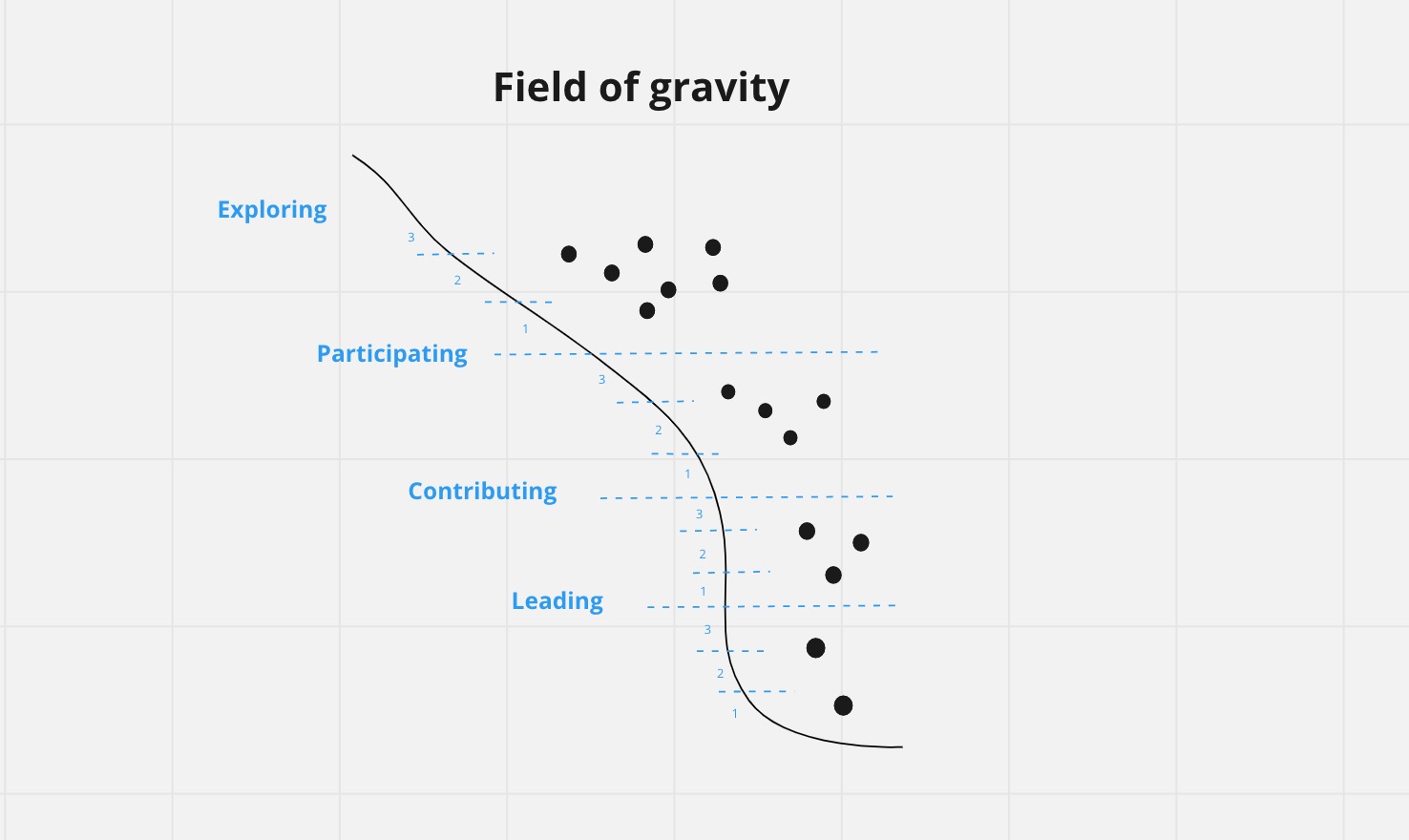Introduction
The Orbit Model is a framework for building high gravity communities. A high gravity community is one that excels at attracting and retaining members by providing an outstanding member experience and increasing the bonds between members.
Let's see how the Orbit Model is built up from this basic metaphor and walk through the model's high-level concepts. These are:
- Gravity: the rate at which member involvement is changing; measured at the community level
- Love: the measure of an individual member's involvement based on their presence and involvement; measured at the individual member level
- Reach: the measure of a member's sphere of influence
- Impact: the outcomes that happen thanks to the operation of the community
Gravity
In a solar system, everything resolves around the sun. In a community, members revolve around a shared mission and set of values. As they orbit, they build a network of relationships that helps the community accomplish its goals. The mission, values, and connections act as forces to attract and retain members.
We call this force gravity. A community's gravity causes members to pull themselves closer to the center. All members start on the outer rim, and some become highly engaged members and orbit faster down at the center. These movements determine each community's unique field of gravity.
In the Orbit Model, we find ways to measure gravity and observe how it changes over time in response to various stimuli, particularly the work of community builders.
Gravity and growth
One of the central tensions in community building is how to grow the community without losing its values and the sense of connection between people—without losing its gravity. The wrong kind of growth decreases the impact and stickiness of a community, and can lead to lower activity overall.
The Orbit Model provides a way to navigate this tension and take advantage of the benefits of both gravity and growth, without falling into the downsides of an extreme on either side. The basic idea is that gravity creates the foundation for growth.
The higher a community's gravity is, the more growth it is ready to take on. In practice, this is because members who increase their commitment level are able to meet, guide, and helper integrate new or less involved members.
A high-gravity community is able to move members at each level of involvement up to the next level in an efficient and reliable way. A low-gravity community struggles to integrate new members and help them reach higher levels of involvement.
As a metric, gravity is a measure of how quickly member involvement is changing.
In the Orbit Model, each member has two characteristics that help us understand the unique role they play and how to serve them best, increasing gravity as a result. These are love and reach.
Love
Love is a measure of a member's involvement in the community. Love increases as members make the journey from being new arrivals to regulars to leaders. Communities need a certain number of high love members in order to help direct people and resources toward the company's mission.
High love members are important, but so are members with every other amount of love. Most communities need a balance between high, medium, and low love members. Understanding the balance is necessary to using gravity as a tool for planning growth, since it's best to add new, low-love members only when we have enough medium and high love members to support and interact with them.
As a metric, love takes into account the commitment level and regularity of a member's activities. Based on love, members are placed into orbit levels. A member's level gives us a quick idea of where they orbit in our community's field of gravity.

Reach
Reach is a measure of a community member's sphere of influence and takes into account their reputation, credibility, and degree of connectedness. High-reach members know many other members in the community. Information is likely to flow through them and their actions are likely to be influential, causing others to follow.
We use networks and graphs to study reach. Each node in the graph is a member. An edge exists between two members if they have a direct or indirect connection, for example if they had a discussion on the community forum or attended the same event.
As a metric, reach takes into account the number of connections a member has, the strength and freshness of those connections, and how centrally their individual web of connections places them within the network. A concept called clout signifies external reach and looks at the member's influence outside the community, and how they act as bridges between disparate groups of people.
Impact
The impact of a community is the set of outcomes that happen thanks to the work and operation of the community. When a business invests in community, the community returns the investment by creating more revenue, leads, visitors, partners, products, support, social impacts, and more.
In the Orbit Model, we describe each community-to-business process as a flywheel, because the outputs of each step of the process feed back in as input. For example, when happy customers become advocates, they draw in more happy customers who become more advocates. As the wheel spins, the outputs multiply. This helps explain the exponential impact that communities can generate.